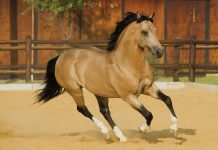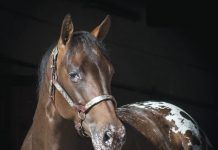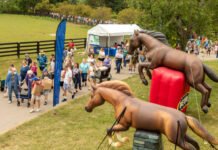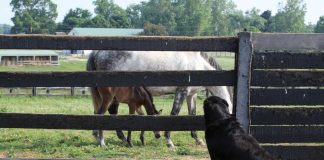When you go to an English-style show, there are often three types of jumping classes that you can enter: hunter, equitation or jumper classes. They are quite different, and you should learn about them before you send in your entry money. Always be 100 percent prepared for the class that you’re going to enter. Let’s take a look at the three classes:
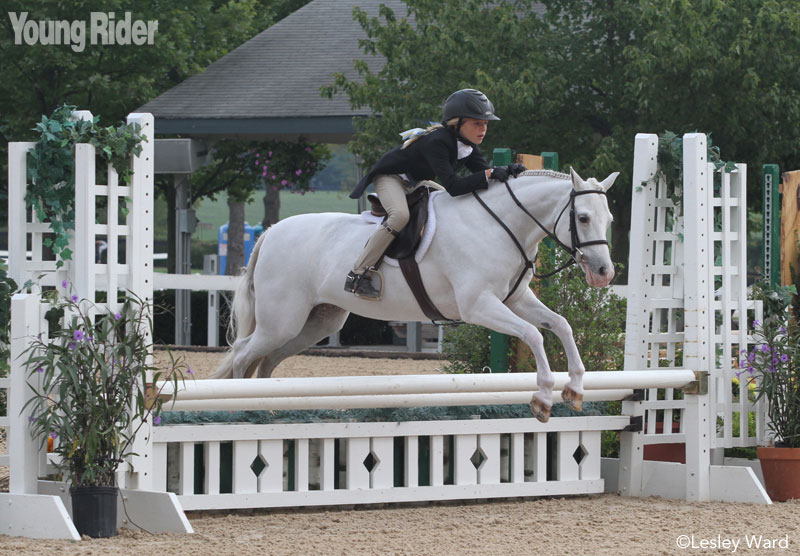
Your riding skill is judged in an equitation class.
Equitation Classes
If you get left behind, or thrown up on your horse’s neck, the judge will note this on her card and you’ll be penalized. You’ll also lose points if your horse taps a fence, knocks down a pole or refuses to jump. You’ll also be penalized if you’re on the wrong diagonal when trotting or if your horse is on the incorrect lead when cantering.
In an equitation class, your horse doesn’t have to be the smoothest jumper in the world, or the most elegant mover. The judge is looking at you, not him.
What do you have to wear in an equitation class? Beige breeches or jodhpurs, black boots, a ratcatcher shirt with a collar or a tie if you’re a boy, black gloves and a dark showing jacket. You’ll see a lot of velvet safety helmets in equitation classes, but you can cover your schooling helmet with a velvet cover.
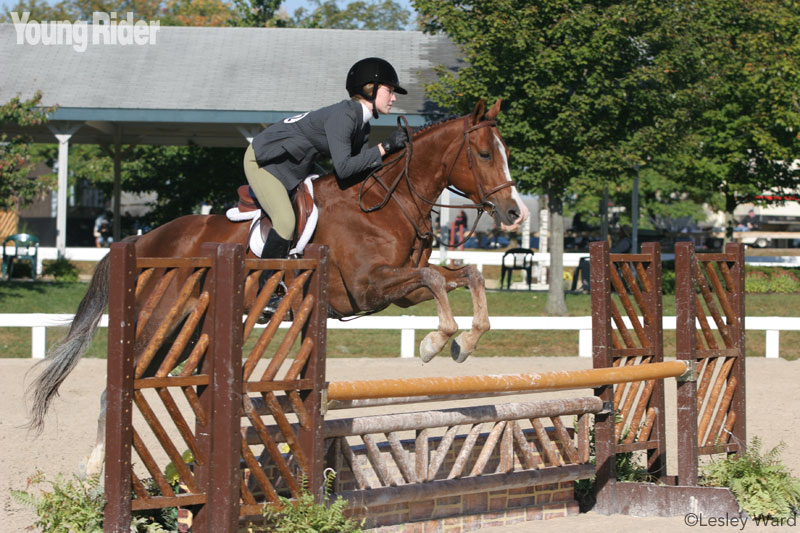
You’ll jump natural-looking fences in a hunter class.
Hunter Classes
Your horse is the one being judged in a hunter class. The judge watches to see if your horse is obedient and well mannered. His movement and jumping ability is judged. He should be a “good mover” and jump around the course in a steady pace. He must travel in straight lines and not wiggle in front of a fence.
In a hunter class, the judge will also look to see if your horse suits you. He shouldn’t be too big or small for you, and you should be able to control him easily.
Your riding style will not be penalized unless you do something to interfere with your horse’s performance, for instance, yanking on his mouth so he stops when he should be going forward.
You should wear the same showing outfit for hunter classes as you do for equitation classes. Hunter courses are fairly simple, and usually have eight or nine jumps. The fences aren’t fancy and will be natural colors like white and brown. You may have to jump brush fences or small wooden gates.
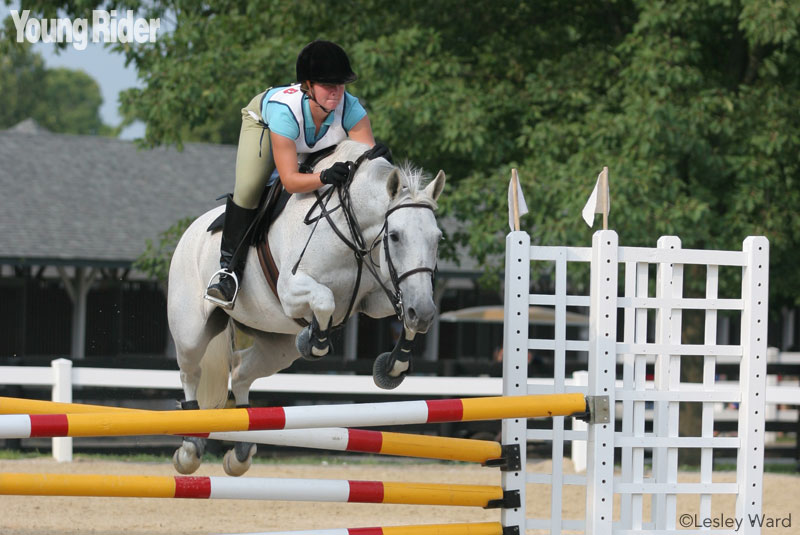
Jumper courses are colorful.
Jumper Classes
The only thing that counts in a jumper class is time and faults. The horse and rider’s form is not judged at all. This is probably why you may see some dodgy riding in jumper classes! The fastest clean round wins. Horses must be nimble and quick—and jump anything that is put in front of them—and riders must be clever and bold.
Jumper courses usually have nine or ten fences. The fences are usually colorful and can sometimes be spooky to a horse. You might see a red wall or a green roll-top style fence in the arena.
If you go clear around the jumper course, you’ll get called back to do a timed jump-off against other people who have also cleared the course. A jump-off course has fewer fences than the jumper class. There might be a tight turn or two in the course. Riders cut corners and jump fences at angles to save time. The fastest time wins the class.
You don’t have to be the most graceful rider, and your horse doesn’t have to be the smoothest mover to win a jumper class. Jumper classes are less formal than hunter or equitation classes. You can wear a dark polo top, gloves, beige breeches or jodhpurs and black boots. You can wear a velvet safety helmet or a schooling helmet. You don’t need to wear a jacket unless it says so on the show program.
Showing Tip
At home, jump the sorts of fences you’ll see in the show arena. If you’re doing hunter classes, put some fir branches in front of a fence. If you’re doing jumpers, paint a fence or two with wild colors and shapes.

